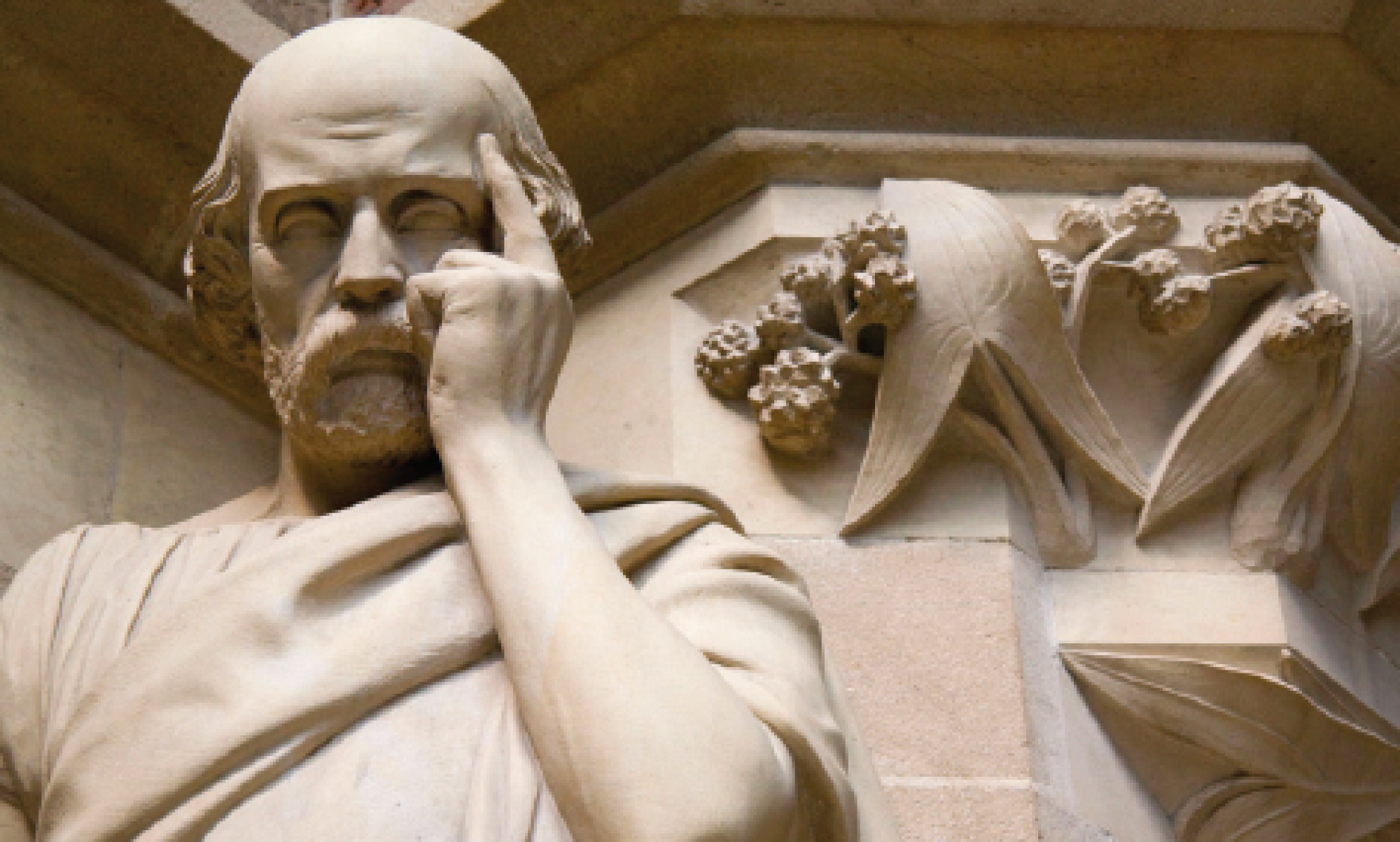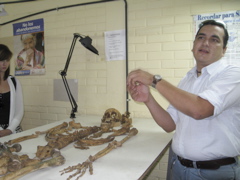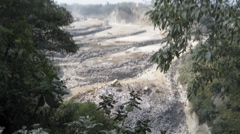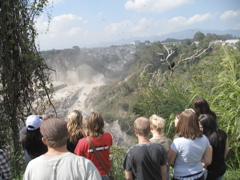
The visit of Canada’s Governor General provided a glimpse into “official Guatemala.” Before lunch at the Palace I was told to stay clear of the windows in the adjoining room because protesters were being evicted from the street below. Taking advantage of the concentration of security personnel, a little palatial “tidy-up” was in order. The salon where we met under a massive chandelier—two and a half tons of Czech crystal, bronze and gold—was adorned with stained glass windows depicting the Spaniards on one side and pre-Colombian natives on the other with not much mixing between. On one side “nosotros,” on the other “ellos.” Two exceptions to this Apartheid. Mestizos were depicted along with creoles learning from priests in the second university established in the Americas (the San Carlos, in Antigua). And the leader of the Kaqchiquel Indians was depicted making an alliance with Don Pedro Alvarado against his Mayan brethren.
In the soft light filtered through these windows we gathered with the President and his wife, leaders of the supreme court and congress, ministers and vice-ministers, ambassadors, and the GG’s retinue. The GG, fresh from a visit to Mexico where she reportedly inspired President Calderon to break into song, has a powerful effect on people. President Colom was evidently smitten. He gave the sort of somnambulistic discourse that falls so soft on the ears, and is so lacking in a point or purpose as to deprive the brain of any possibility of actually understanding let alone remembering what was said. The GG, on the other hand, gave a speech that was quite beautiful and touching, if equally lacking in any hardness or substance. The take away message seemed to be “we believe in Guatemala.”
Back at my table the conversation was a little more pointed. There was much grousing among Guatelaman officials about the unwillingness of the benighted local elite to pay taxes, their indifference to the need for a stronger state—nay, their preference for one that is weak and corrupt—the need for social policy, to educate the masses and other worthy goals. But when the conversation turned to Canadian mining, the blame fell squarely on the NGOs that are dividing Guatemalans against each other and stirring up complaints where otherwise there would be none.
And then it was over, and there was a hasty march to the motorcade. Curious pedestrians watched as a fleet of SUVs and buses and armed soldiers raced off the next meeting, and then went back to their Christmas shopping, enjoying the book fair in the Plaza de la Constitucion, or playing chess in the open air. The protesters had been cleared from the front of the balance and a new security perimeter extended. Progress had been made.
Follow the GG’s visit here.




